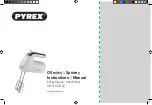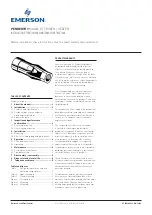
Revision A • 6/06
H
A
R
R
I
S
C
O
R
P
O
R
A T
I
O
N
2-12
2 Installation
DSP & I/O CARD FADER CONNECTIONS
FADERS 1 - 8
NETWAVE-8: 99-1600-08
NETWAVE-16: 99-1600-16
NETWAVE-24: 99-1600-24
FADERS 1 - 8 FADERS 9 - 16*
FADERS 1 - 8 FADERS 9 - 16 FADERS 17 - 24**
(SLOT POSITIONS ARE NUMBERED FROM LEFT TO RIGHT)
(MONITOR &
OUTPUT CARD)
CONSOLE: HARRIS P/N
* AS SHIPPED FROM THE FACTORY, FADER POSITIONS 13 - 16 ARE UNPOPULATED ** AS SHIPPED FROM THE FACTORY, FADER POSITIONS 19 - 24 ARE UNPOPULATED
any time afterwards. If purchased with the con-
sole, they will be separately boxed and are installed
in place of the Dual Blank panels.
This also holds true for the NetWave-24, which
ships with nine Dual Faders (in slots 1-18) and
three Dual Blank panels in slots 19-24.
DUAL FADERS AND DSP & I/O CARDS
Four Dual Fader panels connect to each DSP &
I/O card, as illustrated above. Each connects to
an RJ-45 jack labeled by their channel assignments
(i.e., Fader Panel 7 & 8). These identify which two
channels are serviced by that jack. The panels get
power and send/receive control signals from these
jacks using short red CAT-5 cables. A NetWave-8
frame has four cables, a NetWave-16 has eight and
a NetWave-24 frame has twelve cables.
The optional Dual Router Kits add a second
CAT-5 cable to connect the kit’s TINI card to the
VistaMax LAN. Because of space constraints, two
special flat CAT-5 cables are included with each
Dual Router kit.
The Dual Fader and LAN pass-thru RJ-45 jacks
are located below each Dual Fader panel’s rear
mounting bracket. A chassis label identifies each
jack as to its use.
Audio Inputs and Logic I/O
Each DSP & I/O card has eight analog inputs,
eight digital inputs and eight Channel Logic I/O
connectors, as shown on page 2-13. Which physi-
cal input (analog or digital) is assigned to the A
and B channel sources; its mode (stereo, left, right,
mono); its function (line, CR mic, Studio mic, Telco
1, Telco 2); whether the logic I/O is active for the
A or the B source; and several other parameters,
are all assigned through a common group of chan-
nel setup buttons and LEDs on each DSP & I/O
card. These controls are covered in the next sec-
tion (Setup Controls).
Here are definitions for several NetWave signal
and control panel terms used in this manual:
Channel slot
(1 to 8, 1 to 16 or 1 to 24)
refers to the left-to-right frame posi-
tions, as viewed by a board operator,
where Dual Fader, Dual Router or Dual
Blank panels can be installed. These are
equivalent to the Fader numbers shown
in the illustration, above.
Channel strip
refers to the set of physi-
cal channel controls. There are two
channel strips per Dual Fader or Dual
Routerpanel.
Source
refers to the two operator se-
lected channel sources (A, B) available
on each Dual Fader channel strip.
Local Inputs
or
I/O
refers to the physi-
cal audio and logic connectors on each
DSP & I/O card.
Channel
refers to a channel strip on a
Dual Fader or a Dual Router panel.















































